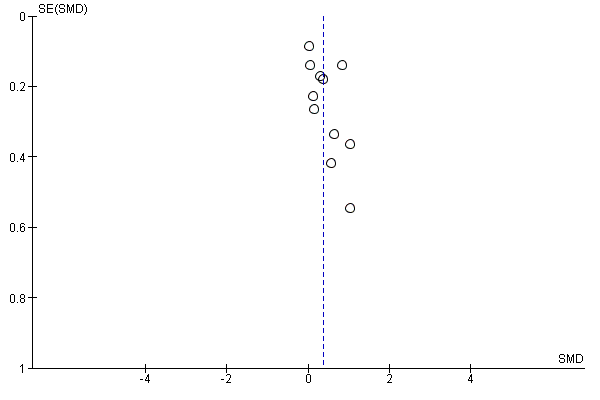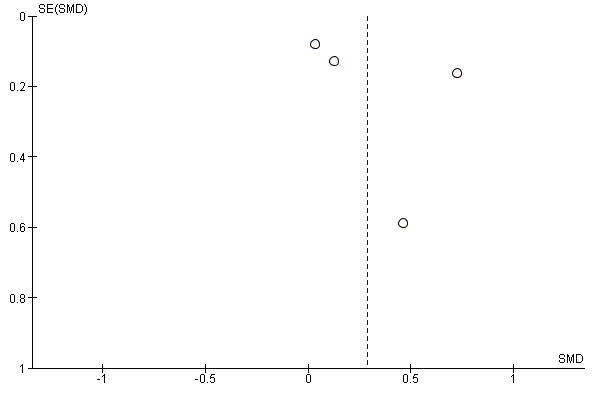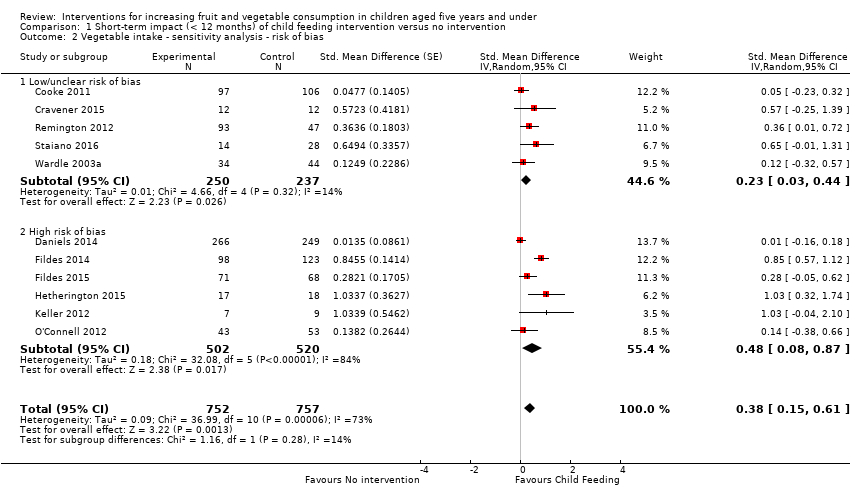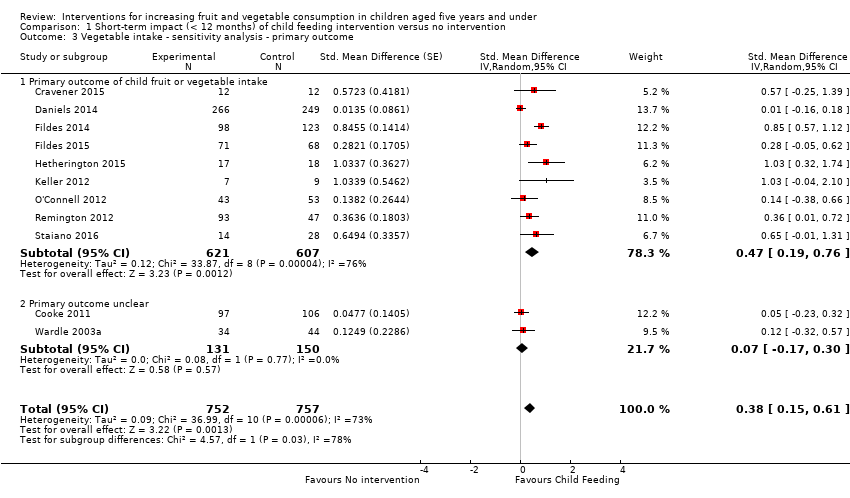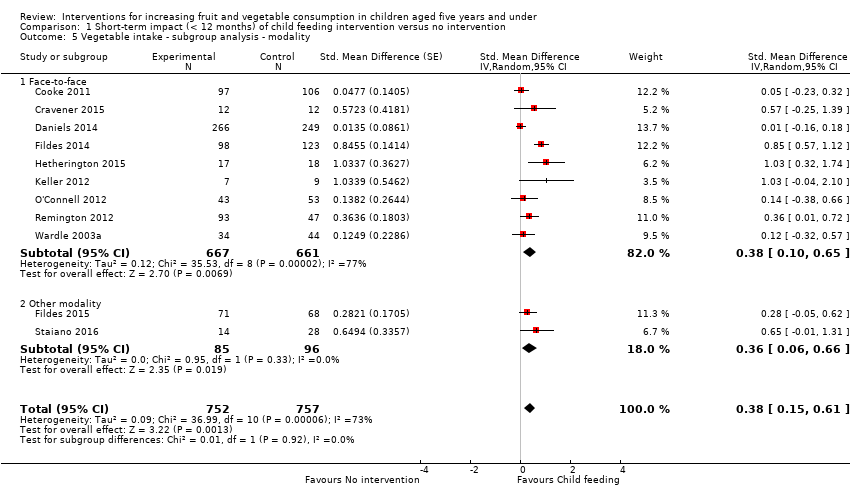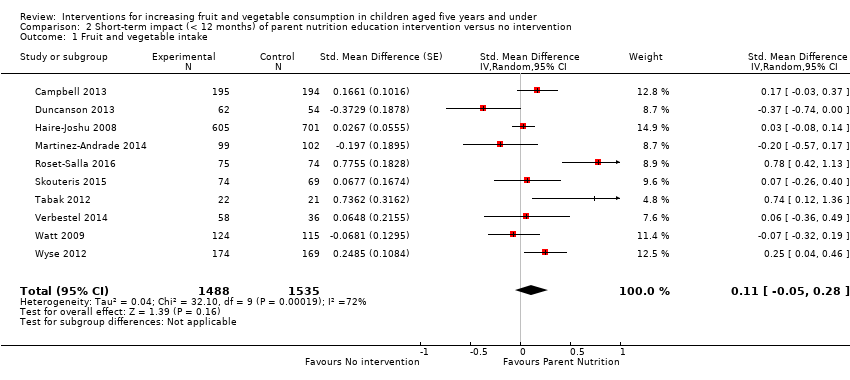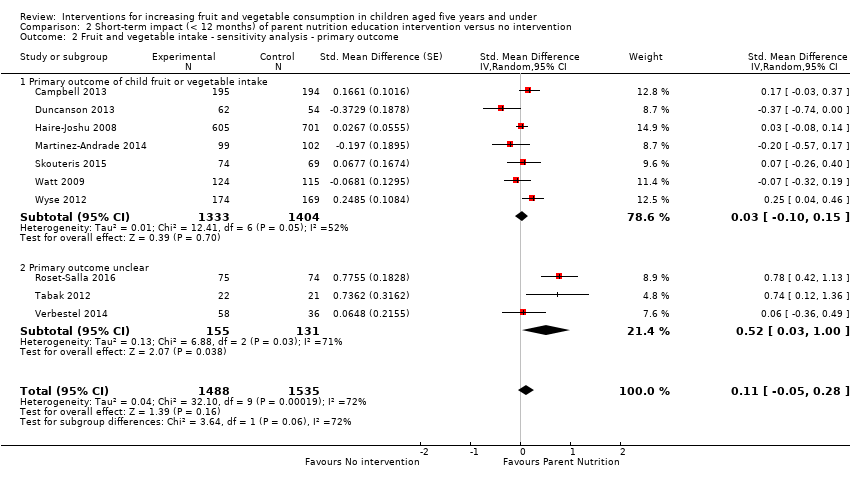Contenido relacionado
Revisiones y protocolos relacionados
Intervenciones para el aumento del consumo de frutas y verduras en niños de hasta cinco años de edad
Rebecca K Hodder, Kate M O'Brien, Flora Tzelepis, Rebecca J Wyse, Luke Wolfenden | 25 mayo 2020
Emily H Morgan, Anel Schoonees, Urshila Sriram, Marlyn Faure, Rebecca A Seguin‐Fowler | 5 enero 2020
Dachi Arikpo, Ededet Sewanu Edet, Moriam T Chibuzor, Friday Odey, Deborah M Caldwell | 18 mayo 2018
Louise Hartley, Ewemade Igbinedion, Jennifer Holmes, Nadine Flowers, Margaret Thorogood, Aileen Clarke, Saverio Stranges, Lee Hooper, Karen Rees | 4 junio 2013
Sze Lin Yoong, Melanie Lum, Luke Wolfenden, Jacklyn Jackson, Courtney Barnes, Alix E Hall, Sam McCrabb, Nicole Pearson, Cassandra Lane, Jannah Z Jones, Erin Nolan, Lauren Dinour, Therese McDonnell, Debbie Booth, Alice Grady | 22 agosto 2023
Elizabeth Kristjansson, Damian K Francis, Selma Liberato, Maria Benkhalti Jandu, Vivian Welch, Malek Batal, Trish Greenhalgh, Tamara Rader, Eamonn Noonan, Beverley Shea, Laura Janzen, George A Wells, Mark Petticrew | 5 marzo 2015
Morris Zwi, Hannah Jones, Camilla Thorgaard, Ann York, Jane A Dennis | 7 diciembre 2011
Yanina Sguassero, Mercedes de Onis, Ana María Bonotti, Guillermo Carroli | 13 junio 2012
Judith C Gomersall, Linda Slack-Smith, Nicky Kilpatrick, M S Muthu, Elisha Riggs | 16 mayo 2024
Olalekan A Uthman, Louise Hartley, Karen Rees, Fiona Taylor, Shah Ebrahim, Aileen Clarke | 4 agosto 2015




